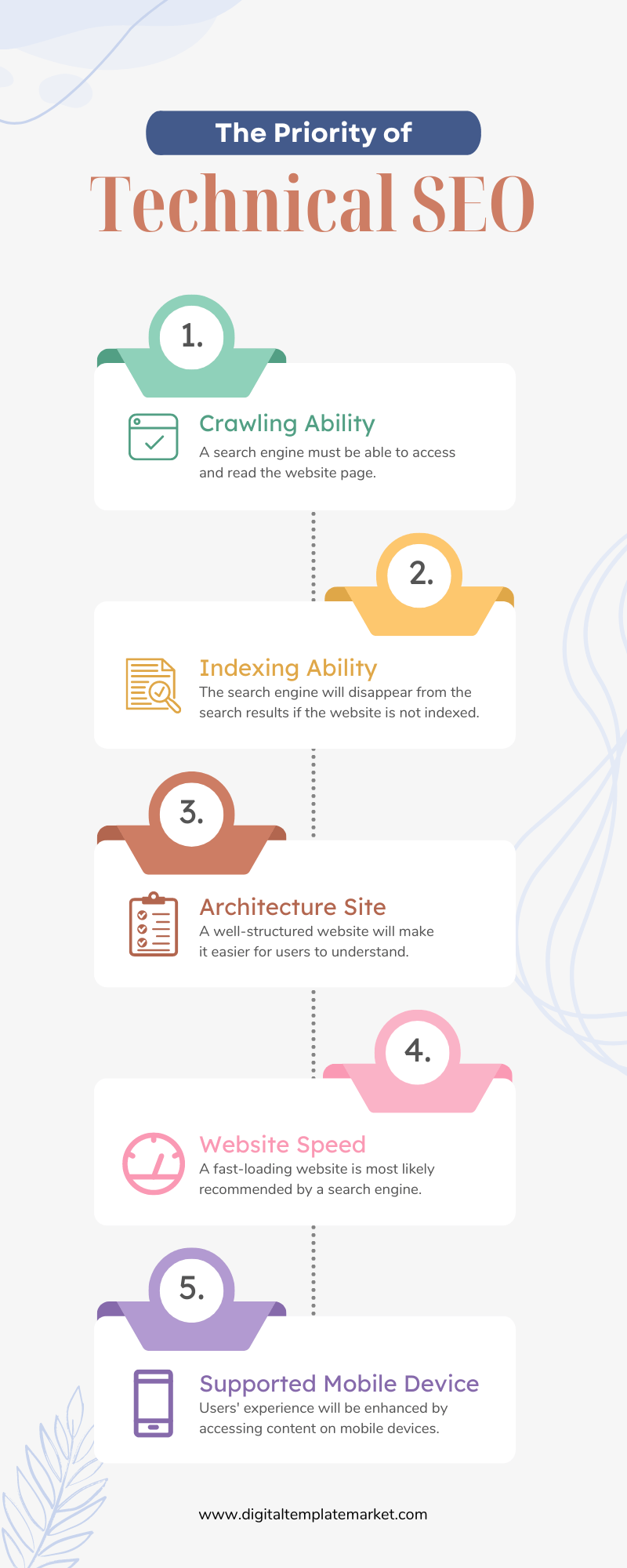
Hey, are you looking for the complete Technical SEO checklist? If yes, then read this post to the end.
If you want to rank high on Search engines like Google and Bing, you need to fix your website’s technical issues. In this article, I have listed the complete technical SEO checklist that everyone can follow.
So, without wasting more time, let’s start.
Elements of Technical SEO Checklist
- Identify and Fix crawl errors for better rankings.
- Plan your website structure.
- Make your website Mobile friendly.
- Use SSL.
- Improve your website loading speed.
- Fix Broken links.
- Find and Fix Duplicate content issues.
- Use 301 redirect to send all traffic to one domain.
- Set up Structure data.
- Check your XML Sitemap.
- Fix 404 pages on your website
1. Identify and Fix crawl errors for better rankings
Crawling errors are the problem that search engines face when viewing your web page. If you want to rank high on SERP, then you need to find and solve these errors so that search engines can crawl your web pages.
To find crawl errors, go to Google Search Console, select your property, and then go to coverage reports. Here, you can see all the crawl errors your website has.
2. Plan your website structure
If you have a new website, it is super important to plan its structure. With the help of a proper website structure, search engines like Bing and Google can easily navigate and crawl your website. To do that, use proper internal linking within web pages so that website visitors and crawlers can easily navigate between web pages and posts.
3. Make your website Mobile friendly
If you want more traffic, leads, and conversions, you should make sure that your website is mobile-friendly. According to the “Mobile First index,” if your website is not mobile-friendly, it won’t rank high on SERPs.
You can use the mobile-friendliness test to check the mobile-friendliness of your website. To do that, simply enter your website’s URL and check.
Simple.
4. Use SSL
According to John Muller, HTTPS is a lightweight ranking factor. Having HTTPS is great for users, so if you are not using an SSL certificate, then it’s time to make the change.
Having an SSL certificate is very important because it protects your users’ data. If you have a lead generation website or a website where you sell something and your website asks for payment details or passwords, then it is very important to have an SSL Certificate.
5. Improve your website loading speed
Page speed is one of the most important ranking factors, which means if your website doesn’t load fast, it won’t rank high on SERPs. To check your website speed, you can use the Google Page Speed Insights tool.
This tool will give you information about how fast your website loads on Desktop and Mobile. It will also offer suggestions that you can implement to improve your website speed. You can also use tools like Pingdom and GTmatrix. These tools only offer stats for one page at a time.
6. Fix Broken links
If your website has broken links, you need to fix them as soon as possible, as broken links can hurt your SEO.
To find broken links on your website, you can use tools like Ahrefs Webmaster and DrLinkCheck.com these tools are free to use. Now, to find broken links, scan your website from these tools; after scanning, these tools will provide you with the links of broken links.
7. Find and Fix Duplicate content issues
If you have an e-commerce website, you might face this issue often. If your website has duplicate content on multiple pages, you won’t be able to rank high on SERPs.
To find duplicate content on your website, you can use tools like the Ahrefs Webmaster tool. This tool scans your website and then clicks on the duplicate content tab. Then, click on the issue tab, and you will get details about the pages on your website that have duplicate content.
To solve this problem, you can use canonical tags.
8. Use 301 redirects to send all traffic to one domain
If multiple versions of your domain, such as
- http://yourwebsite.com/
- http://www.yourwebsite.com/
- https://yourwebsite.com/
- https://www.yourwebsite.com/
If not redirecting to the fourth version, then it can lead to crawling, Indexing, and security issues. To fix this issue, you need to use 301 redirects. After that, the first three URLs will redirect to the fourth version. Now, to check if everything is working properly or not, you can use tools like httpstatus.io.
Note: If you are using an SSL Certificate, then the accessible version of your website should be the HTTPS version.
9. Set up Structure data
With the help of schema data, your web pages can show rich results, and because of rich results, your organic click-through rate can improve dramatically.
To create structured data, you can use a good Schema markup generator tool. To do that, open the tool next, select the type of schema you want to generate, and then add the necessary information. After that, you will get the structured data code that you can put on the website’s website’s web page.
10. Check your XML Sitemap
If you have a big website, it might sometimes be very hard for you to keep track of all your web pages.
Many website owners have pages with 301 and 404 status codes. Always add only live pages to your sitemap so that search engines can crawl your web pages properly.
To create an XML sitemap for your website, you can use tools like the XML sitemap generator. If you are using WordPress CMS, you can also use the Yoast SEO Plug-in. It will automatically generate the XML sitemap for your website.
11. Fix 404 pages on your website
If your website has many broken links, the user experience will be very bad. Stick links make search engine crawling harder. That’s why it is always recommended that you perform a broken links audit of your website every three months.
So, that’s it from this blog. I hope you enjoyed it. If you liked this article on the complete Technical SEO checklist, please share it with your friends and social media followers. If you have any questions related to this article, please let me know in the comments section below.
Also Read – On-Page SEO Checklist.


